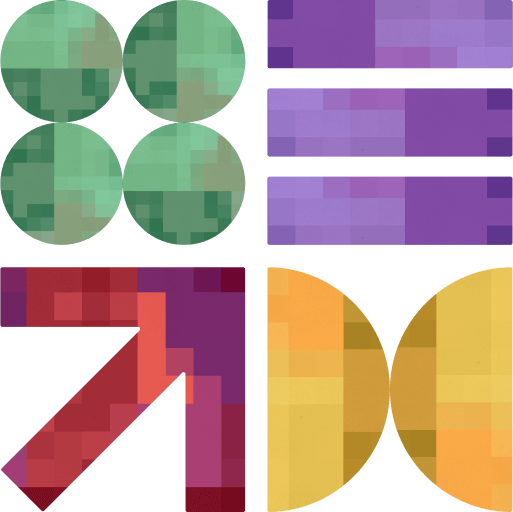Generative AI Landscape for Today and Tomorrow

The growing popularity of ChatGPT and other AI examples has made a tremendous impact on generative AI landscape.
With adoption rates expected to rise to 46% in 2025, there’s no way to ignore this tech and its power.
What Is Generative Artificial Intelligence (AI)?
Before going deeper into the generative AI landscape and what the present and future hold, let’s quickly go over what it actually is.
Generative AI is a branch of AI that focuses on creating models or algorithms capable of generating new and original content. Based on patterns and structures from existing data, these models ‘learn’ then generate similar or entirely new data.
Though associated with tasks like image synthesis, text generation, and even video creation, there’s much more to this technology.
Generative AI models typically rely on deep learning techniques like generative adversarial networks (GANs) or variational autoencoders (VAEs). These models learn from a large dataset and then generate outputs that resemble the examples they were trained on.
However, unlike traditional machine learning models, this technology doesn’t perform classification or regression tasks. Instead, it aims to produce novel outputs rather than making predictions or decisions.
Why You Should Be Concerned About the Generative AI Landscape
Generative AI is a disruptive force that won’t only simplify lives, but inject efficiency and speed in different aspects. Here are some of the reasons why you’ll want to include this in your work.
- Creativity and Innovation – Generative AI has the potential to revolutionize creative industries such as design, music, and storytelling. It helps members of these industries explore new possibilities an generate fresh ideas.
- Personalization – This technology ensures highly personalized experiences via content tailored to individual preferences. For example, you can generate personalized recommendations for products, movies, etc. based on users’ prompts or even behavior.
- Content Generation at Scale – Generative AI models can generate vast amounts of content quickly and efficiently, especially for industries such as advertising, entertainment, and marketing. They can streamline content creation while saving time and resources.
- Virtual and Augmented Reality – AI can create realistic and immersive virtual environments that enhance virtual reality (VR) and augmented reality (AR) experiences. It can further transform industries like gaming, training simulations, architecture, and tourism.
- Data Augmentation and Synthesis – You should care about the generative AI landscape due to the technology’s role in augmenting and synthesizing data. By generating additional synthetic data, AI models can be trained more effectively and accurately. This has significant implications for fields such as healthcare, where access to diverse and large-scale datasets is often limited.
- Problem Solving and Optimization – Generative AI techniques can be applied to problem-solving and optimization tasks. Some are even capable of generating new designs or configurations for engineering, manufacturing, or logistics companies. Moreover, they’re helpful with drug discovery as they can generate novel molecular structures with desired properties.
- Human-Machine Collaboration – This 4IR tech can facilitate collaboration between humans and machines. It can act as a creative partner, providing suggestions, expanding ideas, and helping in the iterative design process.
The Present Generative AI Landscape
Currently, the generative AI landscape is constantly evolving and expanding as new use cases are being identified. While image and text generation are the most popular, the following are present use cases for utilizing this technology.
Music Composition
Generative AI models can generate original musical compositions based on existing patterns and styles. These models assist musicians, composers, and producers in creating new melodies, harmonies, and arrangements.
Video Synthesis
Generative models enable the synthesis of realistic videos by predicting and generating subsequent frames. This technology has applications in video editing, special effects, and virtual reality.
Product Design
Generative AI is used to assist in product design and optimization. By generating and evaluating multiple design variations, designers can create innovative and efficient products.
Software Development
The IT sector is another major player changing the generative AI landscape considering how often developers rely on this technology. Here are some ways developers can use it –
- Code Generation – Generative models can be trained to generate new lines of code, automating repetitive coding tasks, generating boilerplate code, or suggesting code snippets.
- Auto-Completion and Intelligent Suggestions – Generative AI solutions can be used to provide intelligent code auto-completion and suggestions. Based on context and patterns in the code, they can suggest the next line of code or fill in missing code segments. This saves developers’ time and reduces errors.
- Bug Detection and Fixing – Developers can use AI solutions to detect and fix bugs in code. After training on large code repositories, models can identify common coding errors, recommend fixes, or even automatically correct code issues.
- Refactoring and Optimization – Generative AI can help optimize and refactor code to improve its efficiency, readability, or maintainability. Developers will benefit from suggestions for alternative implementations or restructuring code for better performance.
- Code Translation and Migration – Developers can use the technology for code translation between different programming languages or frameworks. AI can automate the conversion of code from one language to another, reducing the effort required for porting codebases.
- Documentation Generation – Generative models can generate documentation by analyzing the code structure, comments, and usage patterns. This can help developers focus on the work at hand rather than documentation.
- Test Case Generation – By analyzing the code logic and coverage requirements, models can generate inputs and expected outputs to validate code functionality.
This, however, in no way means AI will replace developers. Rather, it’ll improve their performance and enhance client satisfaction.
Drug Discovery
The pharmaceuticals industry is one of the biggest contributors to the growth of the generative AI landscape.
The technology helps with drug discovery by generating novel molecules with desired properties. Therefore, it helps with identifying potential drug candidates and reduces the cost and time required for development
Financial Analysis
Wherever financial analysis is required, AI can be quite helpful.
Models can generate synthetic financial data for risk assessment, market analysis, and investment strategies. These models simulate various scenarios to assist in decision-making.
What the Future Looks Like for Generative AI
Now that you have an idea of how powerful the current generative AI landscape is, it’s time to check what the future has in store. The following three are the most highly anticipated trends to look out for.
Generative AI Will Transform Education
Teachers can leverage generative AI to further improve their educational approach.
For instance, they can use generative AI games as well as AI storytelling solutions. These have proven to help students learn more effectively.
There is one issue in the generative AI landscape for education though: AI based plagiarism.
Students are already using tools like ChatGPT to write essays and solve their homework. Thankfully, the tech world is on it and has produced AI content plagiarism detectors. While they’re not fully foolproof, they can estimate the percentage of content generated by AI tools.
Enterprise Apps and Processes Will Benefit Too
There are new APIs in the horizon that will simplify the integration of this AI technology into enterprise apps. These, in turn, will transform the ways mobile apps and enterprise software work.
Currently, leaders such as Microsoft and Salesforce are experimenting with this technology, adding it to productivity and CRM apps.
As for business processes, organizations may be able to reimagine theirs as AI automates and augments everyday tasks. Even small businesses can become AI-native businesses to appear larger and move faster.
Healthcare Will Further the Generative AI Landscape
Healthcare has been one of the main industries benefiting from AI. It has been leveraging this tech for clinical decision making, personalized medication and care, and improved drug discovery.
It even helped during the COVID-19 pandemic, providing insight to scientists and helping them develop preventative measures.
For the future, generative artificial intelligence will help with more critical stages of treatment.
So far, it has been aiding in early-stage prevention. Yet as trust in this technology increases, it can be used for empirical backing, regulatory approvals, and targeted use cases.
Two other interesting fields where AI will help are organ regeneration and pharmacogenomics.
Regenerative therapies will improve as the technology will enhance cellular data analysis. This will lower the chances of organ failure.
Similarly, AI will help scientists studying the impact of genetic variations on people’s responses to medicines.
Where Does Your Business Currently Stand?
With what you now know about the present and future generative AI landscape, don’t miss the opportunity to bring it to your business.
Regardless of which industry you belong in, rest assured that it’ll create a major impact and deliver beyond expectations.





